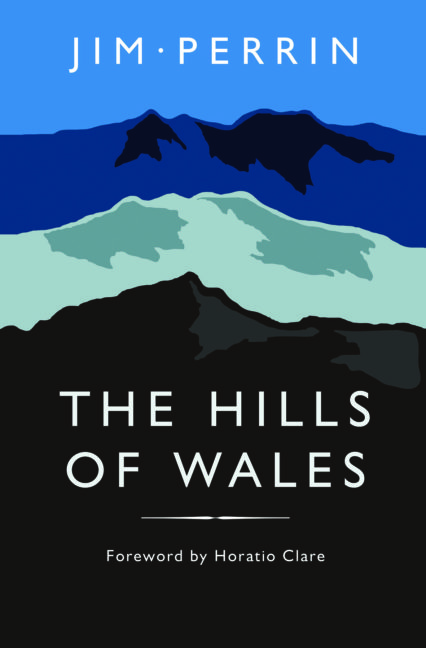Jim Perrin in his introduction says that The Hills of Wales is intended as a companion to his Snowdon: the Story of a Welsh Mountain of four years ago. It is of the same size, design, binding and paper quality as its companion. It is a beautiful physical object, characteristic of its publisher Gomer. Whereas the earlier work was a single narrative, the subtitle here is “Impressions, Impressions, Recollections” from the author’s writings and notebooks. The fifty-seven pieces are grouped into eight parts by geography. “The Northern March” opens with the author on Moel Mamau and Penycloddiau. In the last part “The Southern Ramparts” he is at Y Twmpa, the Carmarthen Van and Carn Ingli.
 Machynlleth’s Museum of Modern Art was host this month to a public debate on the siting of artworks within the boundaries of the Snowdonia National Park. Peter Lord made a pungent thrust from the floor to the effect that hardly a landscape in the world is bereft of the human hand at work. We are after all in the age of the anthropocene. Jim Perrin has vocabulary that includes “tilth” and he can deploy a simile to the effect that a late-day sky is the colour of robins’ eggs. But his book and his writing are suffused with human culture. “I like at times to see the mark of the human on the face of the land,” he says, “respond to it every bit as eagerly as I do to what, since the late eighteenth century, we have been taught to look on as the sublime.”
Machynlleth’s Museum of Modern Art was host this month to a public debate on the siting of artworks within the boundaries of the Snowdonia National Park. Peter Lord made a pungent thrust from the floor to the effect that hardly a landscape in the world is bereft of the human hand at work. We are after all in the age of the anthropocene. Jim Perrin has vocabulary that includes “tilth” and he can deploy a simile to the effect that a late-day sky is the colour of robins’ eggs. But his book and his writing are suffused with human culture. “I like at times to see the mark of the human on the face of the land,” he says, “respond to it every bit as eagerly as I do to what, since the late eighteenth century, we have been taught to look on as the sublime.”
Perrin is in his years of maturity. He is right on what it is to be young. “It is not the subtle or the understated or the more quietly suggested that attracts us when we are young.” A feature in this last weekend’s press on love among the over-sixties affirmed the same. It is the difference between mountaineer and walker. He looks back to the sense of attack, the logging of the numbers of Munros or Corbetts climbed. “I used to revel in all that stuff.” Maturity brings reflection. In a single page he stops in a landscape and muses on a cluster of former inhabitants. Clough Williams-Ellis is there along with Dei Huws, a Free Wales Army volunteer. Eric Hobsbawm has had a second home here not far from Robin Gandy, a mathematician and once lover of Alan Turing. Writers Geoffrey Hill and Patrick O’Brian are former presences.
From Mynydd Moel he walks down a southern slope and sees the view that Richard Wilson saw for his 1765 painting in London’s Tate Britain. The Perrin eye on an eighteen inch by two feet canvas is as sharp as the eye that roams rock and field. Wilson’s work is “all russets and Payne’s grey with the palest blues and greens and a touch of gold on foreground boulders which root its conceptual diagonals firmly in the landscape.”
The writing often takes on an compelling quality of incantation. A bravura passage on walking in moonlight begins with “All was silence. Shadowy secrecies of the night held sway.” He continues with evocation of Camus’ “invincible summer” of the heart and Bach’s Partita in D. On the Glaslyn estuary he remembers that it was for Shelley the view without peer. Perrin looks in the same vein towards Moel Ddu “fading at twilight into milky indigo shadow, all detail lost of woods like old brocade across its flanks.”
If there is a personal philosophy it is the presence of Simone Weill who is cited once on “the plenitude of being.” To walk is “to be attentively present.” The intermingle of the natural world and human culture on the land “gives you something to question, pictures to create in your mind, purposes to unravel, the jigsaw of history to piece together from the disparate elements of fact, feature, literature, place, imagination and mood.” He lauds Bill Condry but this too is the best of landscape writing.
Perrin seems to have been everywhere. The River Unk may defy an internet search but he has been there and sensed a smell that is not quite stoat or polecat. The book comes without index. That is an advantage in that there is no alternative to immersion into the luxuriant prose. The Hills of Wales takes its place with pride on the shelf beside Snowdon.










